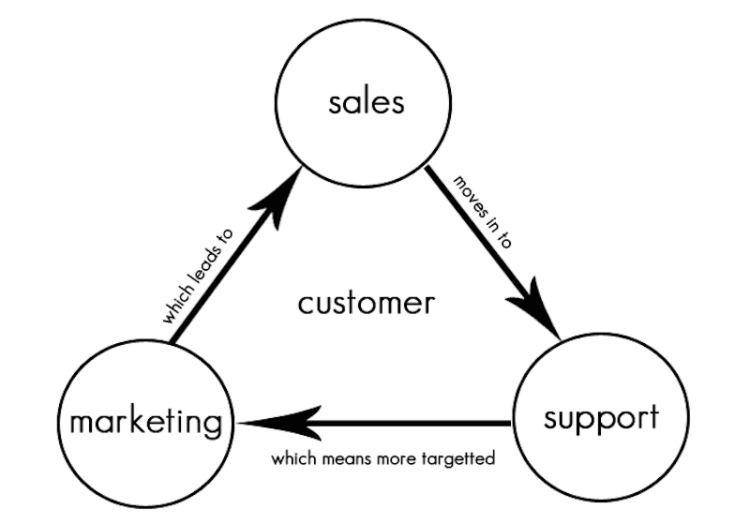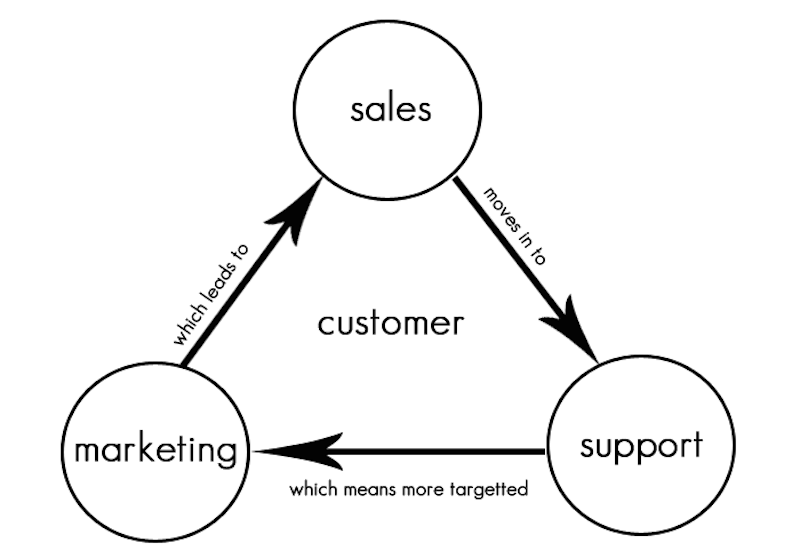CRM is dead! Long live CRM! I just had to get that out of my system because what I am going to talk about has little to do with CRM. However, because you have been programmed by vendor marketing machines, industry trade rags, and implementation horror stories, you will protest that what I propose is CRM. If you are patient though, the evidence will clearly and unequivocally demonstrate that what the software industry has been pushing for years as sales software is nothing of the sort. Stated bluntly, CRM is not for sales people. It is not just the eternal struggle between sales management that wants more information and sales reps that push back. It is that CRM as a business strategy and process, has little to do with sales efficiency or closing deals faster. The stated goal of customer relationship management is to improve the customer experience across an organization. The software that was developed from this principle was meant to operationalize this experience and enable processes to organize customer information and interactions efficiently within a company. Sales is only one part of that equation.
Even before CRM was a term coined and monetized into a multi-billion dollar industry, there was software specifically built for sales people. On the one hand there were contact managers, many of which are still popular today and were tools for sales people to be their digital rolodex. On the other was a category of technology called SFA, or Sales Force Automation, that was used by sales management to track deals and account activity across a team. Then business executives got the CRM bug in the late 90’s and the idea of having a separate system for sales people seemed “quaint”.
After nearly twenty years of “adopting” CRM, leading edge businesses are seeing the folly of all-encompassing software suites. The idea of having one place to store and manage data for consuming across an organization does have value. It’s simply that the database got mixed up with user experience and the two became tightly coupled. Management just assumed they could train staff on usage and enforce compliance. However, top-down, carrot-and-stick management dictates have little staying power. Eventually employees, especially sales people, will find the path of least compliance.
We will not see big ERP and legacy software suites fade away. They are the data and process plumbing for big companies. The trend is modern systems built for specific groups that plug into the existing infrastructure. It started with call center and marketing tools, and now lead generation teams have their own specific tools. CRM is not the day to day tool anymore for those groups. There is a layer between the user and the CRM system that is easier to use, simpler to manage, and oriented to what users actually need to be more productive.
Field sales is next in line for this technology refresh. Technology vendors are starting to fully recognize the market opportunity for this category of software. In one analysis, B2B field sales teams are generating $6.4 trillion in business every year with 23 million sales professionals globally.
So what do we call this software category? Some call it sales productivity, some use sales enablement, but neither really speaks to this innovation in sales technology. We are not talking about single purpose bolt-on tools to CRM, but an entirely new technology direction. So I am borrowing from the marketing tech world and calling this new platform Field Sales Automation, or FSA.
I am not proposing a new monolithic technology suite that apes CRM. That is not where software is heading. Instead, FSA is a category that includes tools that fall into the buckets of sales intelligence, sales productivity, sales analytics, and sales education. The common theme is that any FSA technology has to first and foremost support field sales teams involved in complex sales. Some of the new technologies will be very narrowly focused, others may straddle a few of these categories, and some may try to become the platform play. The eventual result is a field sales stack that finally mirrors the actual sales experience for sales reps and sales leaders.
Image credit: CC by Sean MacEntee




